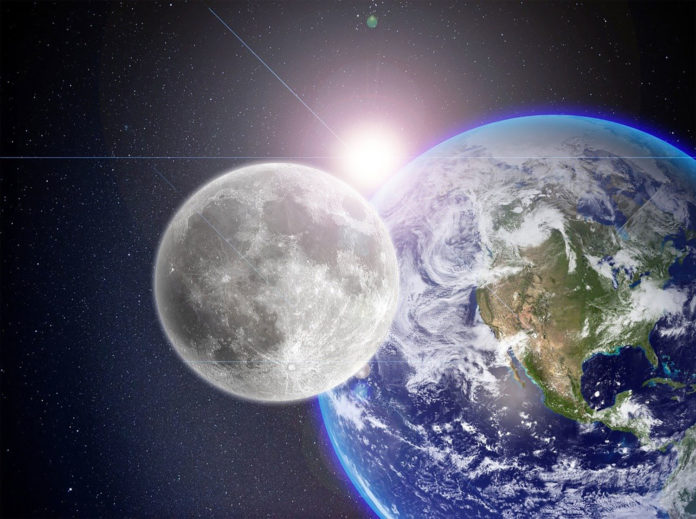Earth’s inward functions are prominently modeled as disseminating heat produced by inner radioactivity and from extra energy generated during collisions when our planet formed. But the mantle convection proponents suggest that that amount of internal heat energy is insufficient to drive large-scale tectonics. And there are other problems with using convection to explain observed plate motions.
A new analysis offers an alternative hypothesis that the movement of tectonic plates is related to convection currents in the Earth’s mantle. The study by the Washington University in St. Louis suggests that imbalanced forces and torques in the Earth-moon-sun system drive circulation of the whole mantle.
Scientists argue that force, not heat, moves large objects. The sun exerts a strong gravitational pull on the moon, causing the moon’s orbits around Earth to become extended.
Geophysicist Anne M. Hofmeister in Arts & Sciences at Washington University in St. Louis said, “Over time, the position of the barycenter — the center of mass between the orbiting bodies of the Earth and the moon — has moved closer to Earth’s surface and now oscillates 600 km per month relative to the geocenter. This sets up internal stresses, as the Earth continues to spin.”
“Because the oscillating barycenter lies ~4600 km from the geocenter, Earth’s tangential orbital acceleration and solar pull are imbalanced except at the barycenter. The planet’s warm, thick and strong interior layers can withstand these stresses, but its thin, cold, brittle lithosphere responds by fracturing.”
Earth’s rotation creates the highest force at the equator and zeroes at the poles. Since the Earth is not perfectly solid throughout, this force results in the Earth being ‘squashed’ into a slightly flattened sphere. This prompts brittle failure of the lithosphere.
Scientists suggest, “These two independent stresses create the mosaic of plates observed in the outer shell. The variety of plate motions comes from the changes in size and direction of the imbalanced gravitational forces with time.”
How to test this alternative?
Hofmeister suggested: “One test would be a detailed examination of the tectonics of Pluto, which is too small and cold to convect, but has a giant moon and a surprisingly young surface.”
For the study, scientists compared rocky planets that show that the presence and longevity of volcanism and tectonism depend on the particular combination of moon size, moon orbital orientation, proximity to the sun, and rates of body spin and cooling.
Hofmeister said, “Earth is the only rocky planet with all the factors needed for plate tectonics.”
“Our uniquely large moon and particular distance from the sun are essential.”
Journal Reference:
- Anne M. Hofmeister, Robert E. Criss, Everett M. Criss. Links of planetary energetics to moon size, orbit, and planet spin: A new mechanism for plate tectonics. DOI: 10.1130/2021.2553(18)
